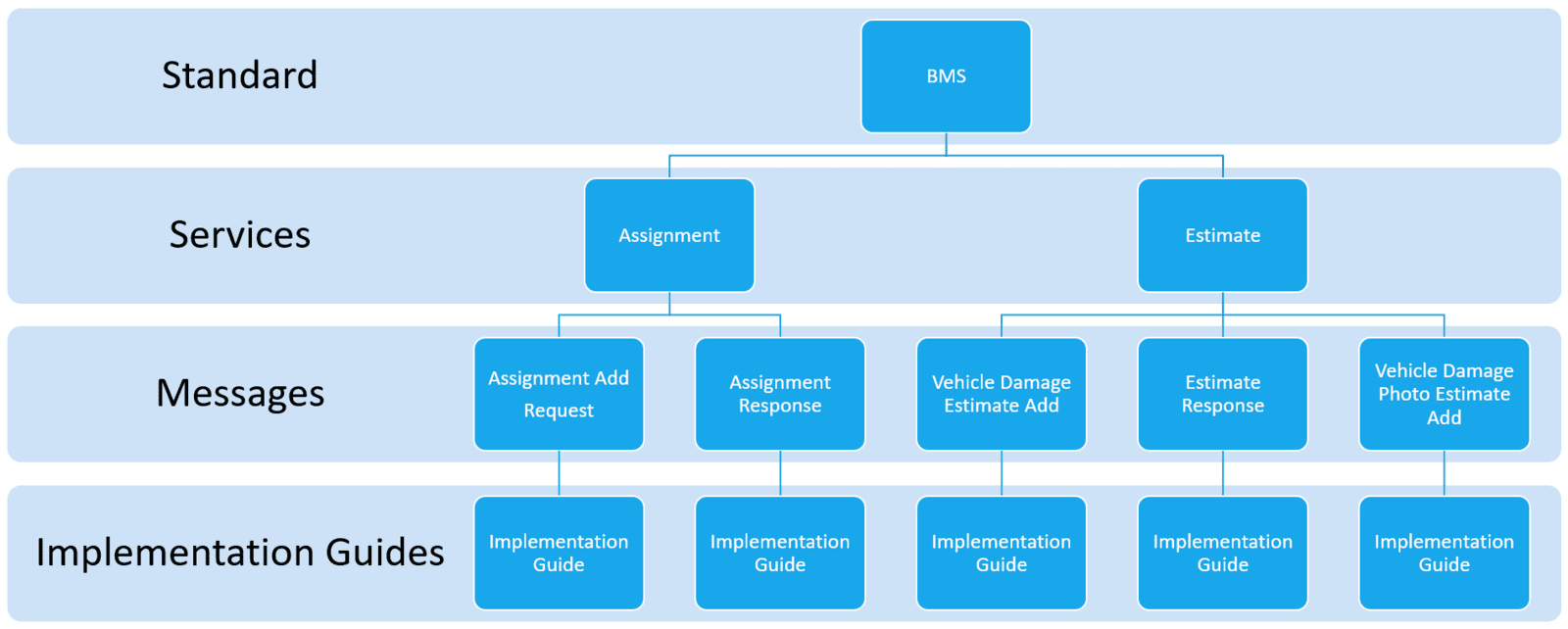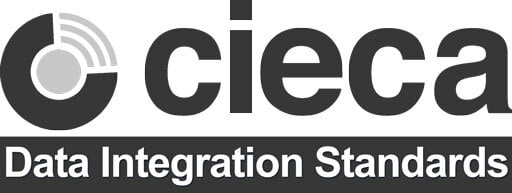CIECA 101
Introduction to CIECA Standards
CIECA has developed a suite of standards designed to address specific business needs or use cases. CIECA Standards are organized by use cases, which we call 'services' and may include one or more 'messages' that comprise the use case. Each is designed to support the workflows and data unique to a specific business process.
Types of CIECA Standards
CIECA was founded in 1994 to solve a specific business problem—the exchange of estimate data across estimating platforms. Over the years, the standards have grown to encompass all facets of collision industry workflows and processes. As technology has evolved, CIECA has evolved with it, developing standards that meet the needs of the industry.
Key Concepts

CIECA Standards are organized in a hierarchal fashion. The graphic above illustrates a simplified explanation of how the BMS Standard is structured using two services (Assignment and Estimate) as examples. A more detailed explanation of each level is provided below.
Note: There are actually 16 services in the BMS; each service consists of between 2-12 messages. Each message has a corresponding Implementation Guide.

